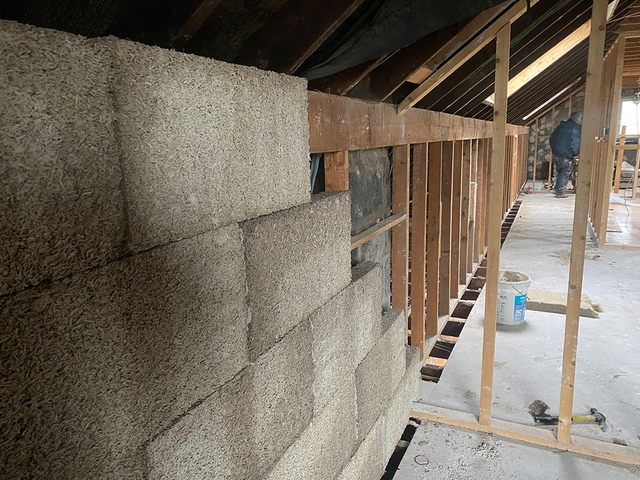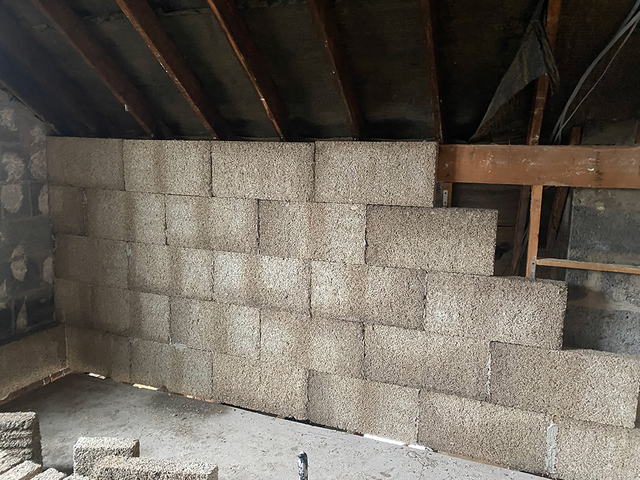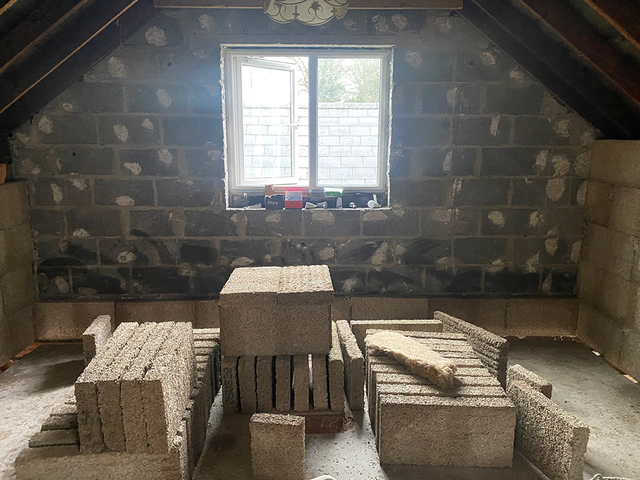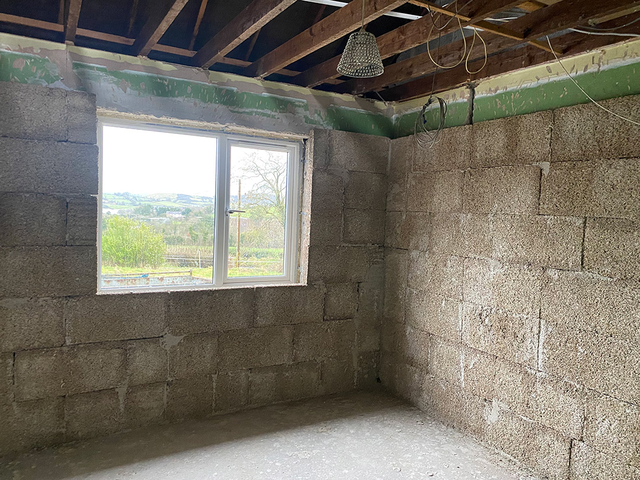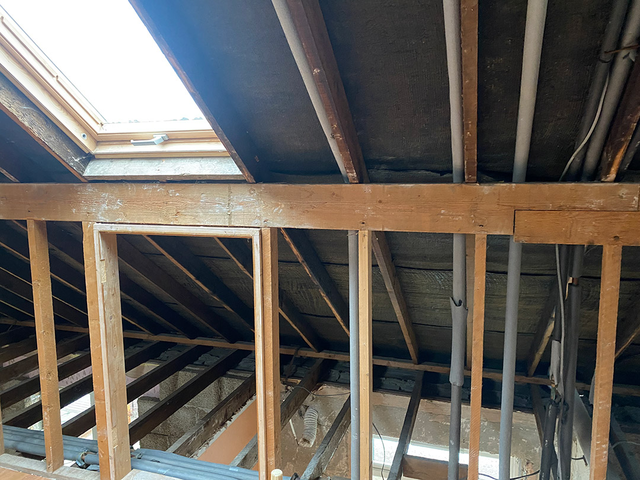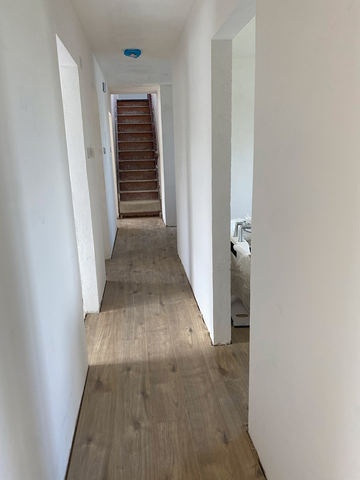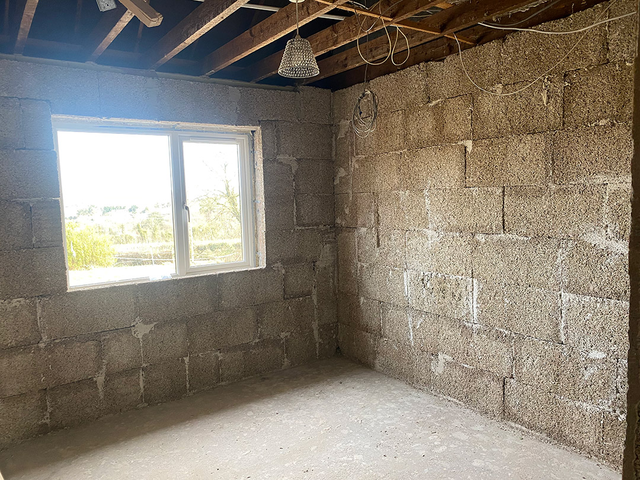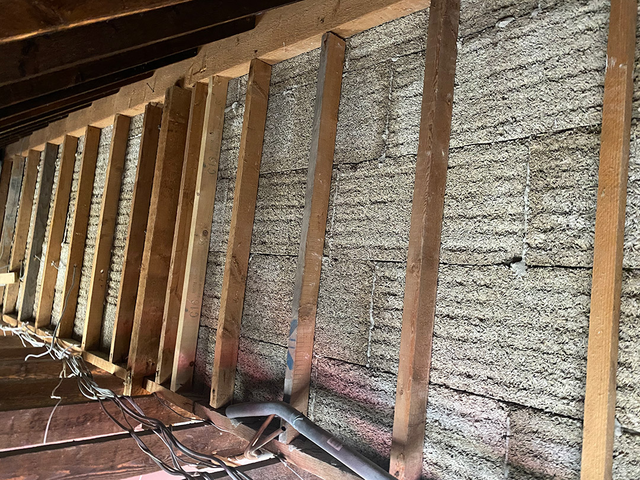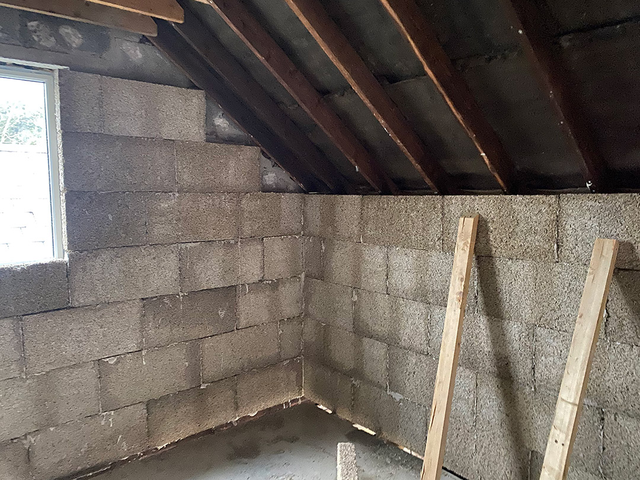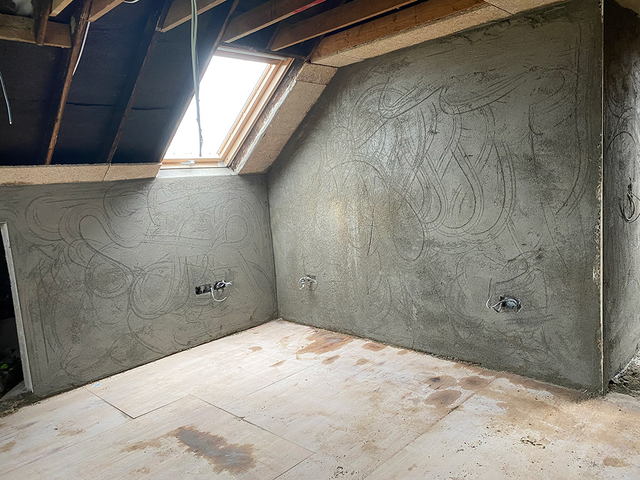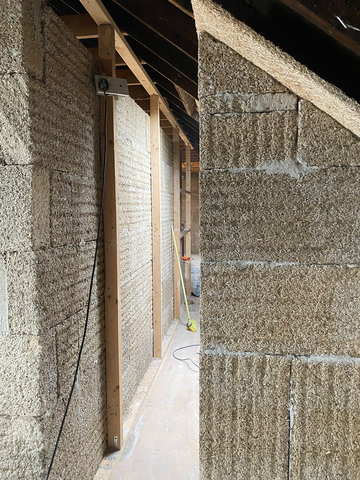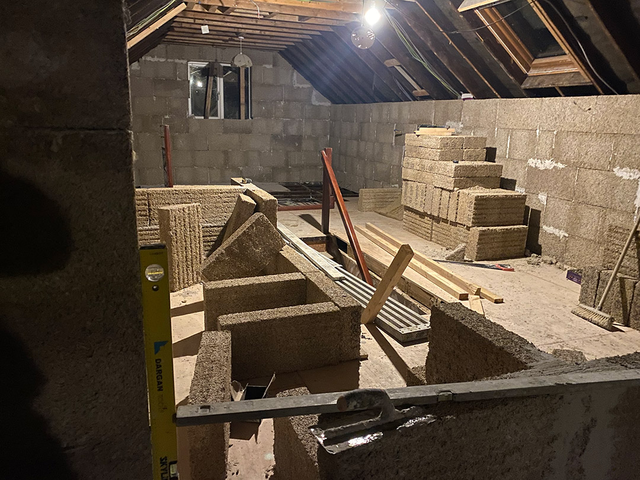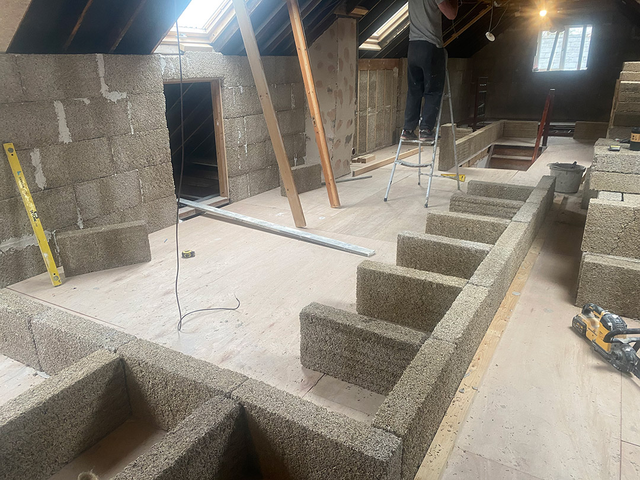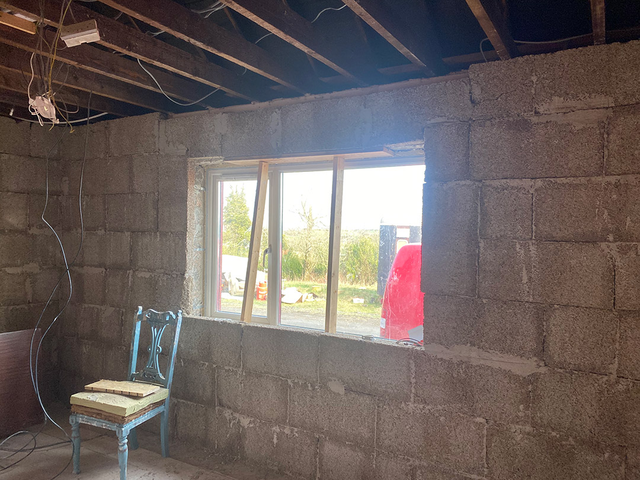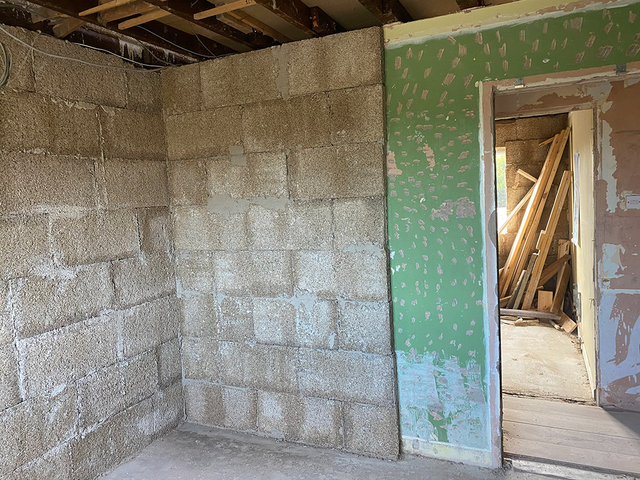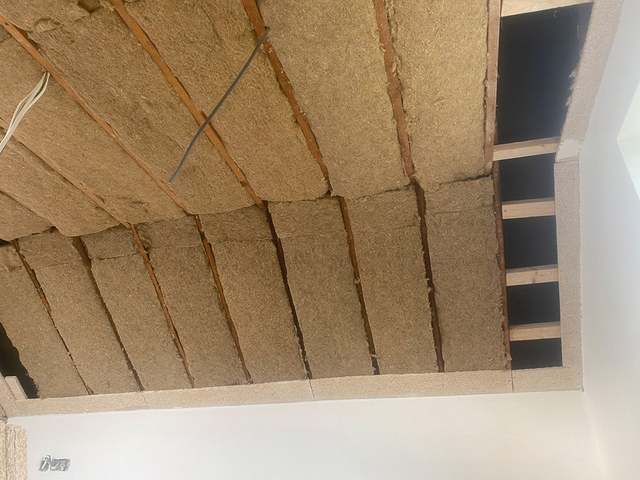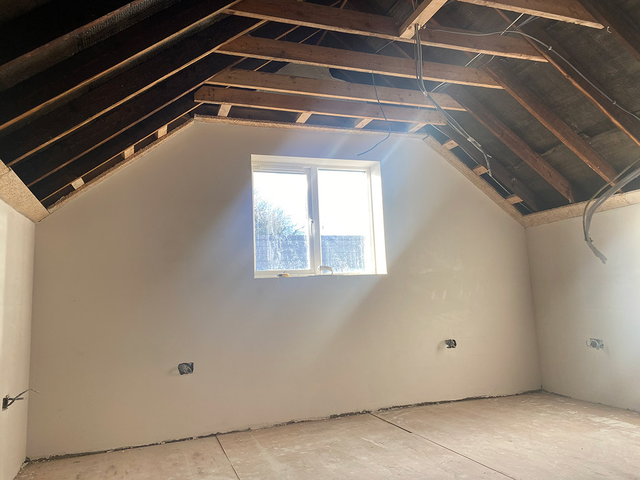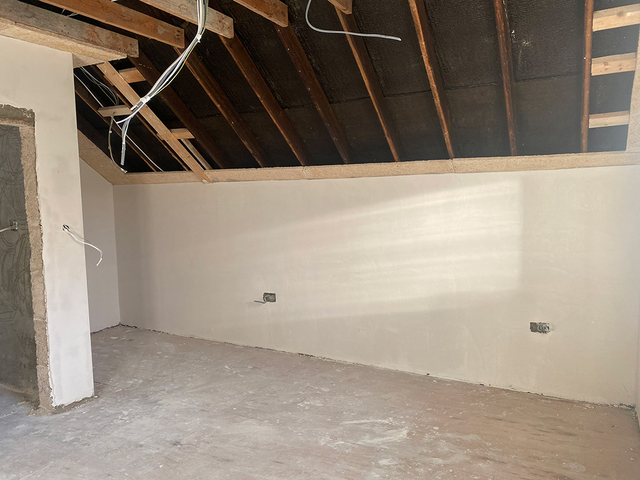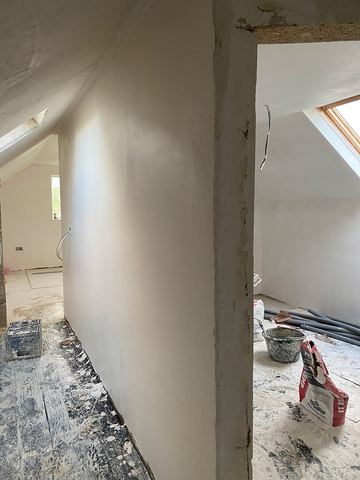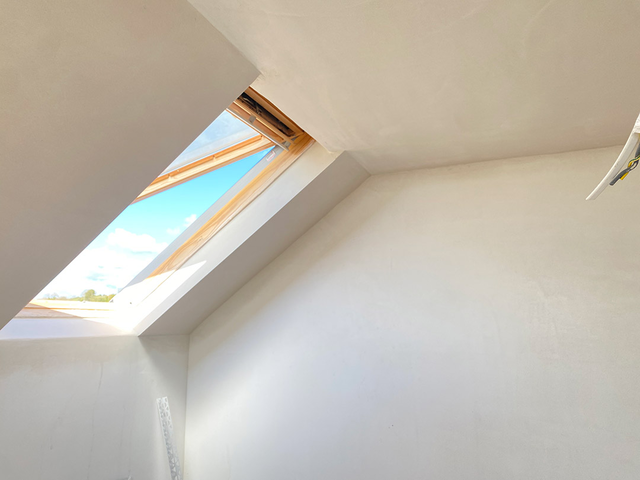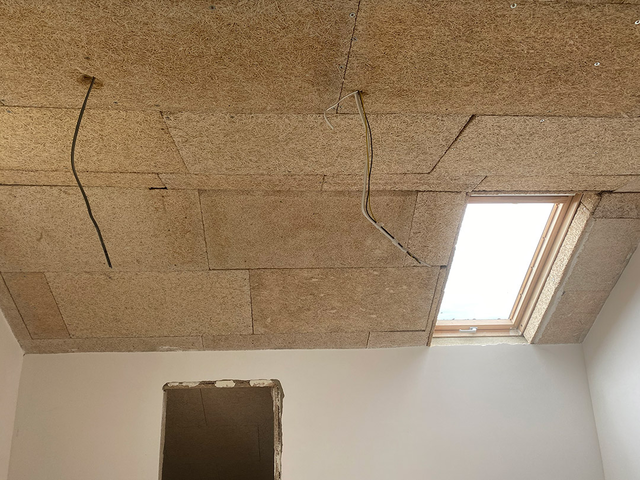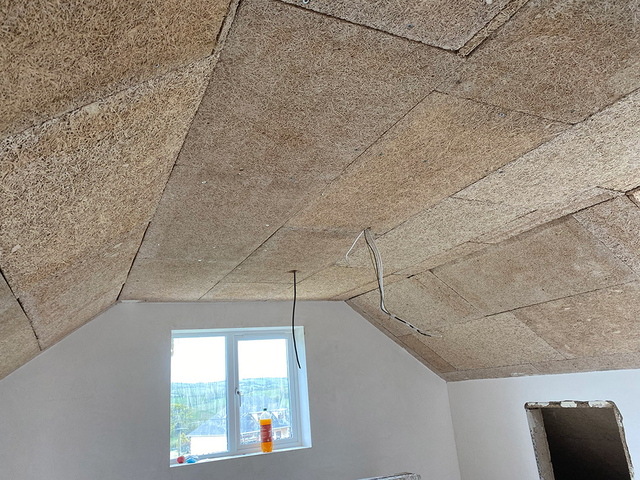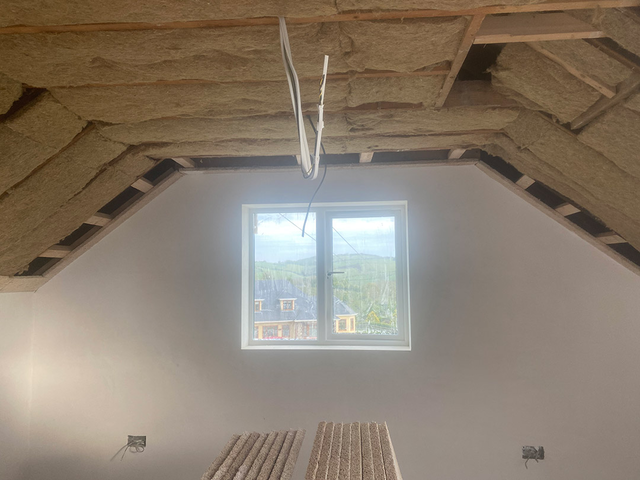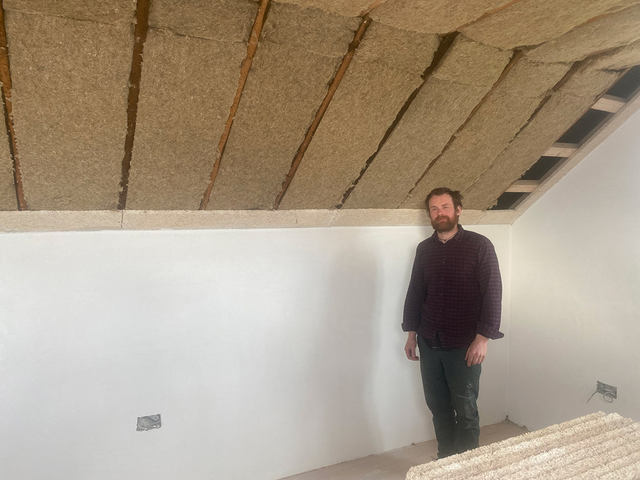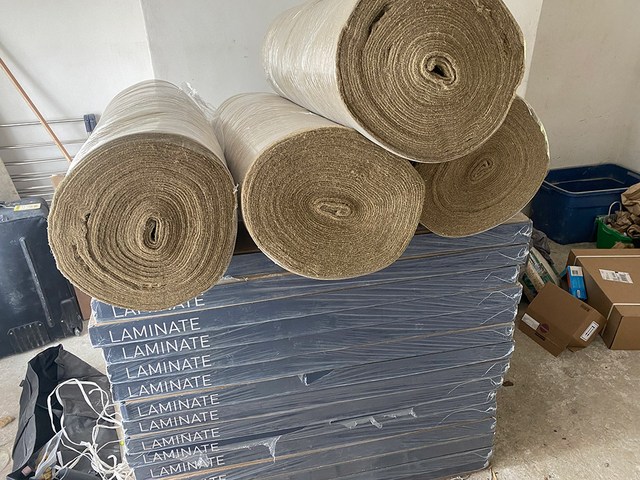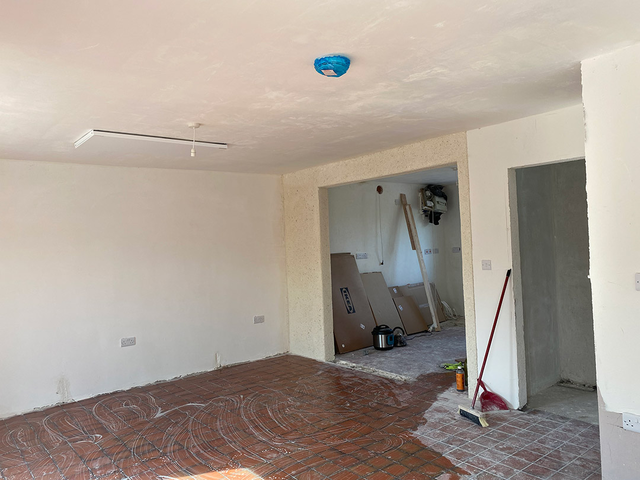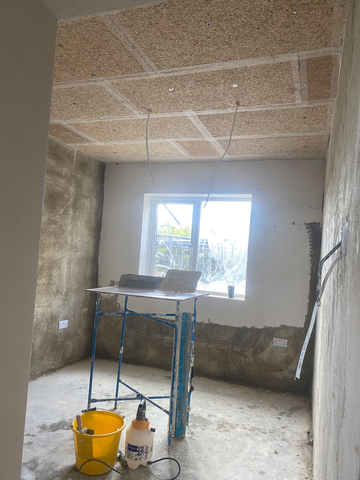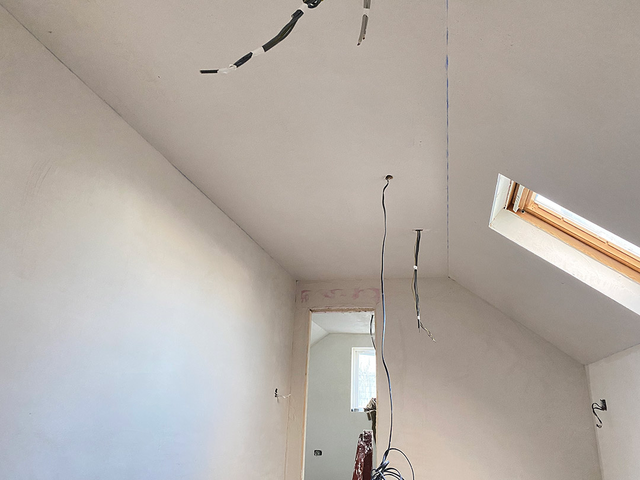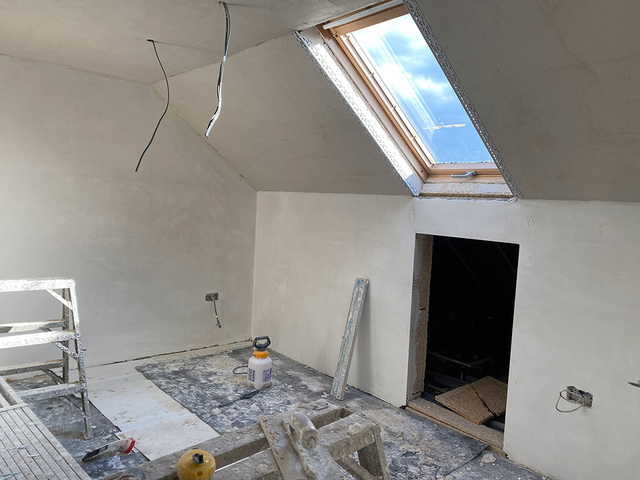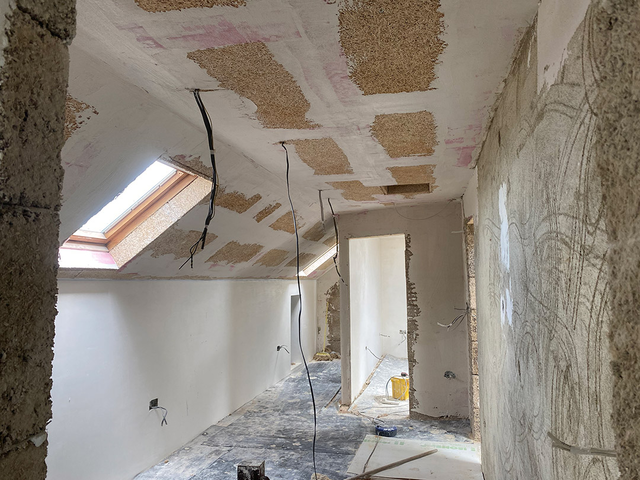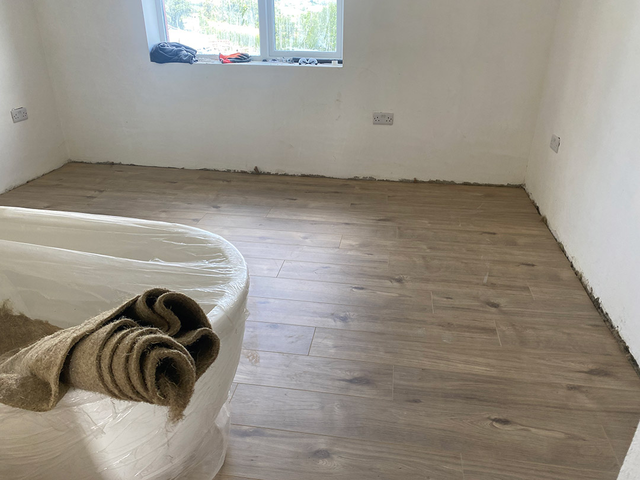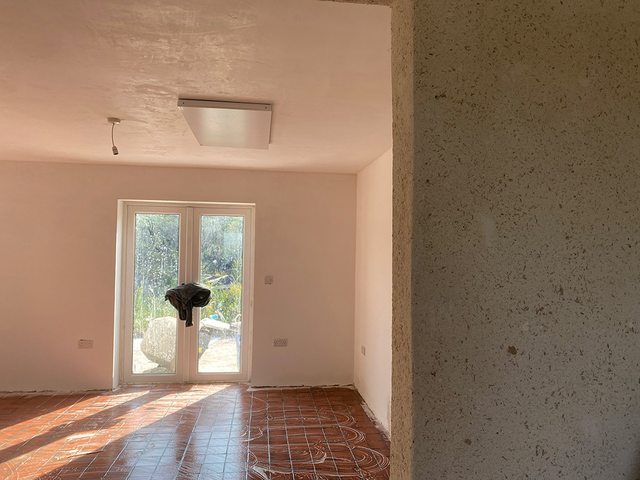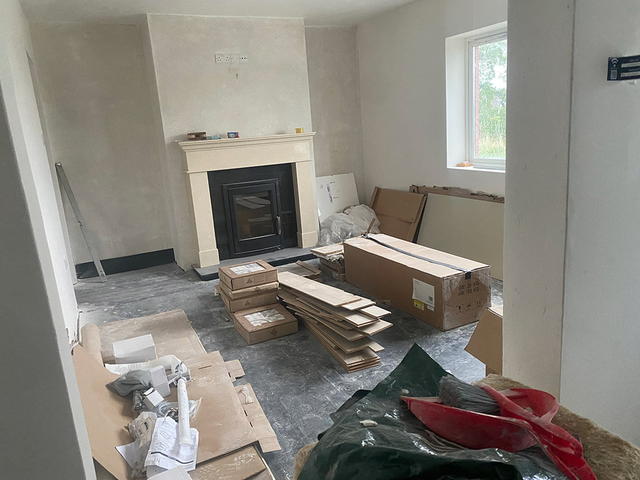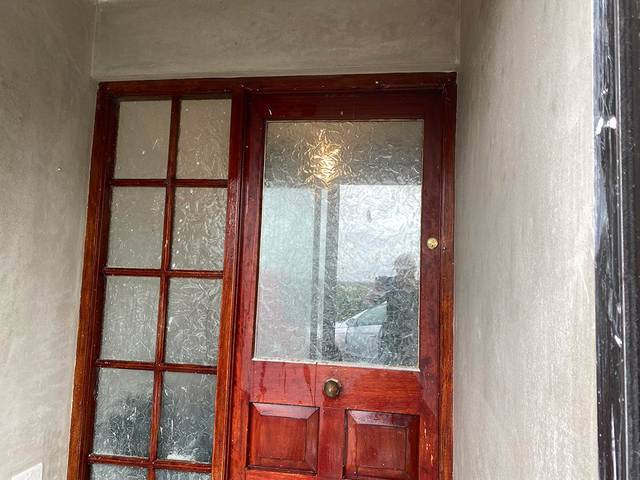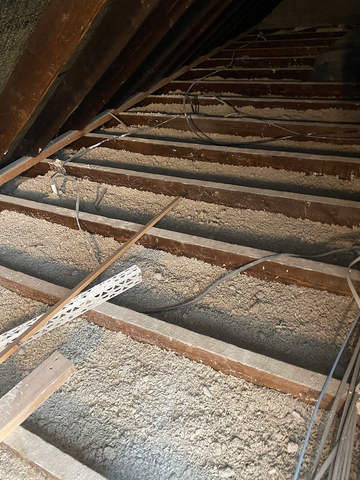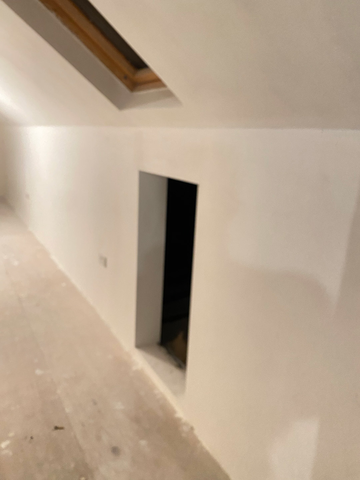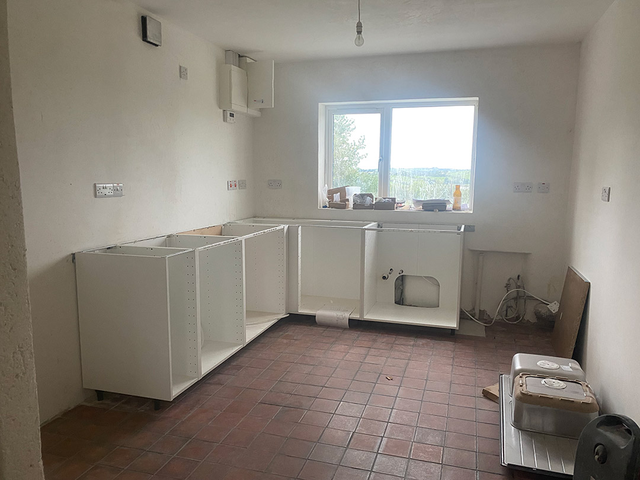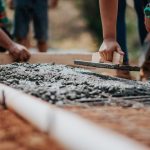Ethel and Stan Smith share how they went about their bungalow hemp renovation in Co Carlow.
In this article we cover:
- Why they chose to use hemp insulation over more traditional products
- How hemp compared to other products: costs vs benefits
- How they tackled their renovation project
- Whether they applied for an SEAI grant
- How the renovation was carried out
- Other upgrades to make the house warm
- Indoor air quality and moisture management
- Progress build photos
What is the background to the project?
When we moved into this mid-1980s house we saw it as a fantastic opportunity to renovate. It needed work done in any areas, from electrical upgrades to plumbing. And we felt some physical alterations could make the space more expansive and let in more light.
We were both born in the 1980s and grew up in rural Ireland, so there was a lot of nostalgia for us around creating a home of that era in the countryside. It had a lot of potential, and when lockdown hit, we saw it as a great opportunity to bring in some new systems and change the philosophy of the home to a more breathable, clean, efficient environment.
Did you consider extending?
The house was built as a bungalow, and the upstairs had been developed previously. So we did not feel an extension would add to the aesthetic of the home.
[adrotate banner="57"]What were your aims for the renovation?
We wanted to take the opportunity to make the home fit our environmentally conscious lifestyle, and felt simplicity was a theme that would fit a country home such as this. Chemical and mould sensitivity is on the rise and something I have suffered with myself, so that was a consideration too.
While doing our research, we came across a hemp insulation supplier that piqued our interest. We looked further into the benefits of using hemp-based products to create an efficient home. After researching as much as possible and knowing the use of hemp as an insulation material worked well in other climates, we were willing to take the leap.
How did hemp compare to other insulation products?
It’s got great environmental credentials, as it’s a fast growing plant. But it also came out on top for the health benefits, in terms of air quality, mould resistance and regulating indoor temperature.
The more we researched, the clearer it became that renovating using hemp and lime-based products was the answer for us. These products are better able to handle the elements of humidity when it comes to environmental issues, including mould.
Plastering with lime immediately led to using more breathable paints/no Volatile Organic Compounds (VOCs) paints and other natural products as the project continued. We love that there are new and natural answers out there in all areas of construction.
How did it compare cost wise?
Since the company we took on to renovate our home is perhaps the only one in the country that imports, distributes, and uses certified hemp blocks, we got a reasonable quote. Ronan was our point of contact and he managed all communication and delivery of the hemp products directly to our door.
We asked Ronan to both supply the materials and fit them. It was a relief to have one company take on the entire renovation for us. Ronan managed the retrofit process and liaised seamlessly with us, clarifying options step by step throughout the entire process. Ronan and his team worked diligently and swiftly to insulate our home with hemp.
On the plus side, we did not have to broker other companies for materials. The cost was transparent from the beginning and given the benefits of the products, we found it reasonably priced.
Did consider getting a Sustainable Energy Authority of Ireland grant?
No, we didn’t look into it. I don’t even know if we were eligible. Covid hit and in the end we had to decide fast on going ahead with the renovation at that time. A window opened where we were both off work, and we just kind of went for it.
Were you nervous about trying a relatively new product?
Hemp has been used for thousands of years to insulate homes, so it’s not new. But it is a product that’s only just making inroads here in Ireland. Still, we were confident in its credentials. Also Ronan was hugely generous with his time – he showed us how best to maximise heat retention, design finishes, along with safety features including fire retardation.
He has vast experience in using a multitude of plastering styles, which we incorporated to create statement walls in the living room and kitchen, as well as a minimalist, Mediterranean theme on the
bathroom walls.
How did the bungalow hemp renovation go?
At the design stage we experimented using blocks of different thicknesses to vary heat retention as well as maximising space as it’s an internal wall renovation. We began gutting the house in January of
2021 and moved in October of the same year.
Something that helped us throughout the process was realigning our ethos and reminding ourselves why we were doing things. Especially when the details and decisions were flooding in.
What other upgrades did you carry out?
Because we stripped the entire house back to its bare bones, we were able to plan our home heating and hot water solutions to maximise the insulation materials we installed.
For this reason, besides two fireplaces, we also installed infrared heaters on the ceilings of each room. Infrared is a form of heating we became interested in and had experienced in another setting.
These became the primary heating solutions for the entire dormer bungalow. Removing all radiators, and old piping relating to gas central heating felt rather brave and radical at the time. We are into
our second winter and while there was a drying out process, as there is with any home, we find these two forms of heat completely adequate based on the house size.
How does the house feel compared to other homes you’ve lived in?
It’s unlike any other house we have lived in. It’s really something you have to experience, as it can be hard to put into words.
The air feels clean and healthy. On hot days, the house is quite cool, and during winter months, the house retains heat extremely well and distributes this heat to the hemp walls surrounding it.
Many mornings we have gotten up to make breakfast and felt the wall at the back of the fireplace, only to discover that it was still warm, even nine or 10 hours after the fire has died! Hemp blocks have the incredible feature of regulating the temperature in a home. While remaining entirely breathable, they manage to improve air quality while also retaining valuable heat.
One of the best features for us in our home, is the fact that hemp prevents mould from propagating, since the material is entirely breathable. At the end of the day, we are happy knowing our home is healthy from the fabric of the building itself, right through to the low-tox cleaners and paints.
What would you change about the design or build process?
The entire process was very creative, and we honestly wouldn’t change a huge amount in how we completed the retrofit, even despite the fact that we had never used this material before.
Hemp is incredibly pliable and easy to manipulate, enabling us to make last minute changes if we needed to the design. Unlike concrete blocks, hemp blocks are light and can be cut using a handsaw or electric saw.
This allows for easy handling and construction. Not only that, but the grains that are created while cutting can be reused so as to completely reduce waste.
Supply and fit of hemp insulation: Hempbuild, hempbuild.ie

